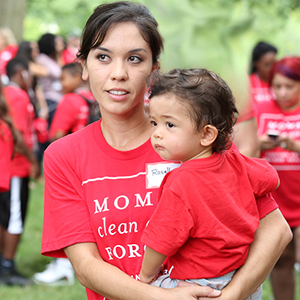
New Mexico isn’t an obvious leader in the fight to cut climate pollution. It is the second largest producer of oil in the U.S. and the fourth largest producer of natural gas. It relies on the fossil fuel industry for more than a third of its government operating budget. And the New Mexico House of Representatives passed a unanimous consent vote to declare January 28, 2025, New Mexico Oil and Gas Day, to recognize the industry for the funding it provides to state programs—which includes funding for public education.
And yet, under Governor Michelle Lujan Grisham, who has been in office since 2019, New Mexico has become a model of climate action. The state has set a greenhouse gas reduction target of 45% by 2030 and net zero emissions by 2050, established a task force to lead state climate policy, and developed strong clean car and clean truck rules. The state’s methane rule, finalized in 2022, is historic, eliminating hundreds of millions of pounds of harmful pollution annually from the state’s oil and gas operations, including pollutants that cause health-harming ozone.
Tell New Mexico Lawmakers: Lead on Climate Safety
This year, the New Mexico legislature is considering 19 bills related to oil and gas production in the state. With efforts to slow global warming grinding to an intentional halt at the federal level, these state bills have never been more important. “I am thankful for everything our state has done in the last few years to cut methane emissions and ozone pollution, but with more than 144,000 New Mexicans living within a half mile of oil and gas facilities, we need to be using every tool in our toolbox to protect their health,” says Celerah Hewes, Albuquerque resident and a National Field Manager with Moms.
New Mexico has a pollution problem
New Mexico is home to a whopping 62,000-plus oil and gas facilities, including wells, compressors, and processors. These facilities are responsible for more than a third of the state’s greenhouse gas emissions—ground zero for the state to meet its greenhouse gas reduction targets. Specifically, they are a huge source of methane, a potent climate pollutant with significantly more warming power than carbon dioxide in the short term, hence the state’s need for strong methane regulations. And they are also releasing harmful air pollutants, like volatile organic compounds, nitrogen oxides, and hydrogen sulfide.
Methane contributes to global warming and all its associated health impacts—from increased risk of heat-related illness and death to heart and lung disease to anxiety and depression—and its co-pollutants have their own serious health implications too. They can increase the risk of certain cancers, lead to preterm birth and low birth weight, and exacerbate respiratory issues like asthma. And they can contribute to the formation of ground-level ozone, a.k.a. smog, which can also aggravate asthma and other lung diseases.
Bills to protect children’s health and the environment
Reducing methane and other pollution from the oil and gas sector is vital to New Mexicans’ health—and particularly children’s health. More than 27,000 children in the state attend school within the half-mile risk radius of local oil and gas operations. New pollution protections included in several of the 19 oil and gas bills the New Mexico Legislature is considering this year would go a long way specifically to protect children’s health. These are a few of those bills:
- The Clear Horizons Act (SB4) would make Governor Lujan Grisham’s greenhouse gas reduction targets state law and set aside $3 million to invest in innovative climate solutions. It would also require annual state climate pollution reports and the review of plans to cut emissions every 10 years.
- The Community Benefit Fund (SB48 and SB49) would allocate $340 million for investment directly in local projects that reduce climate pollution, improve infrastructure, and create jobs in rural communities and those overburdened with industrial pollution. The types of projects covered under this fund would include building solar and wind farms, improving bike and pedestrian infrastructure, and upgrading public school bus fleets to zero-emissions electric buses. It would also provide critical training to workers transitioning to clean energy jobs. This translates to serious health and kitchen table economic benefits for New Mexican families, who will see less toxic pollution, better-paying jobs, and lower energy bills.
- The Innovation in Government Act (SB83) would provide $10 million in critical funding to state agencies to support efforts to cut climate pollution and build community resilience in the face of warming-fueled extreme weather.
- A bill to establish Children’s Health Protection Zones (HB35) would create one-mile buffer zones around schools where new oil and gas wells could not be drilled. Given the potential serious health impacts of pollution from wells—including increased risk of asthma and various cancers—this bill would be a major win.
- A bill to prohibit new emissions in high ozone counties (HB33) would stop the buildout of new oil and gas operations in places where ozone pollution, or smog, is above EPA’s established limit and reduce polluting facilities in already overburdened neighborhoods.
“We have the opportunity this legislative session to do more on climate and meet a goal of zero net emissions by 2050,” says Giovanna Rossi, Moms’ New Mexico Field Organizer. “Our children are the most vulnerable to the health impacts of climate pollution, so to protect them, we must act now by moving forward with strong and comprehensive strategies to cut oil and gas pollution and ensure clean air before it is too late.”




